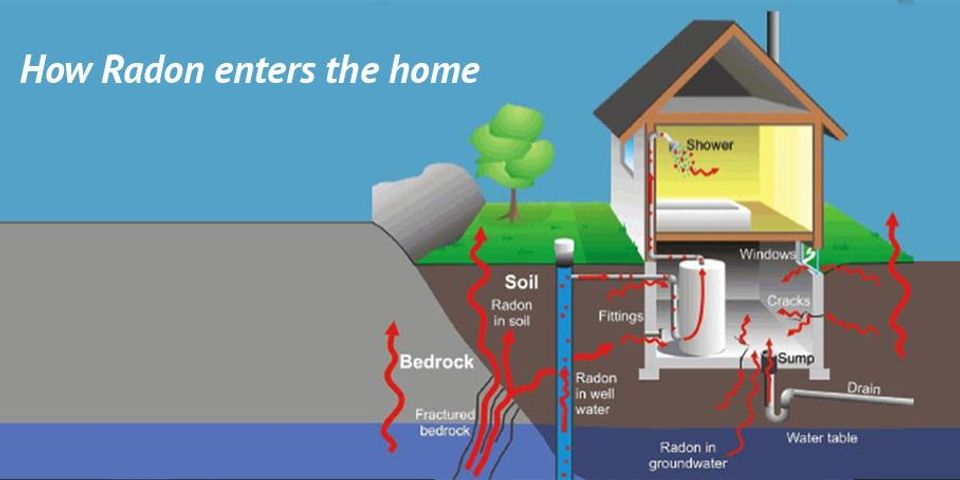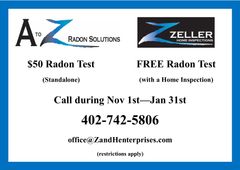Radon Mitigation Experts Explain Why Radon Tests Are Still Important

The knowledge of radon gas posing a lung cancer threat to homeowners first came about in the 1980s and has now been identified as the likely cause of countless deaths. Since that time, some progress has been made to minimize risks due to radon exposure; however, the staff at A to Z Radon Solutions, a division of Z&H Enterprises in Lincoln, NE advises that the first step to lowering the risk of radon is to conduct a test to determine the radon level in your home. Radon gas is present in EVERY home, by ignoring this fact, you may unknowingly be exposing yourself and your family to elevated levels of radon gas.
What Is Radon?
Radon is a naturally-occurring radioactive gas. It’s colorless, tasteless, and odorless. The gas is released when radioactive uranium, found in the earth’s soil and rock, goes through its natural decay process.
How Are Humans Exposed to It?
Radon gas generally enters the home directly from the soil through small openings in the floor and foundation walls. In addition, some radon can enter as a dissolved gas in the water supply, where the gas is released from the water into the air. After entering the home, the radon gas mixes with the air where it can then be inhaled and enters a person’s lungs. As more of the gas enters the home, the concentration of radon can exceed the EPA action level of 4.0 pCi/L, which puts the occupants at an increased risk for lung cancer. Highest concentrations of radon gas are typically found in the lowest level of the home or building.
How Can You Protect Yourself Against It?
Radon tests are the only way to see how much radon you’re being exposed to in your home. Although there are self-test kits available, radon professionals have special test equipment that allows them to obtain prompt radon readings and recommend actions if elevated levels of the gas are found.
There are several ways that the radon levels in the home can be reduced. Sealing/caulking floor and foundation cracks can help to slow the amount of radon entering the home, but most often an active radon mitigation system is needed to draw air from beneath the structure. The mitigation system is considered a permanent installation and provides a long-term solution for lowering the radon level in your home.
Radon-resistant features can also be incorporated into a new home as it is being constructed to help resist the intrusion of the radon gas.

Whether you suspect you have radon issues in an existing building or want to take preventative measures with new construction, turn to the staff at A to Z Radon Solutions, a division of Z&H Enterprises. They offer comprehensive radon tests and mitigation services. Call (402) 742-5806 today to schedule an appointment, and visit their website and Facebook to learn more about their services.
About the Business
Have a question? Ask the experts!
Send your question

